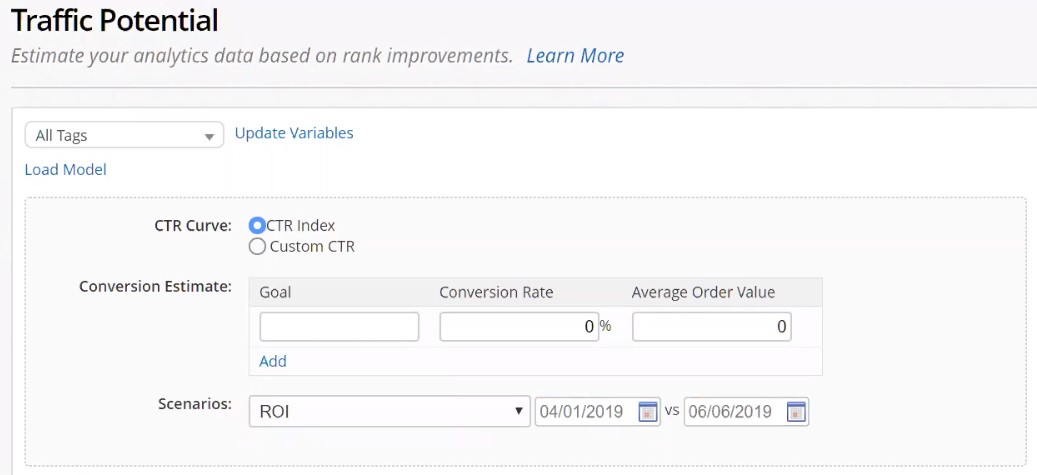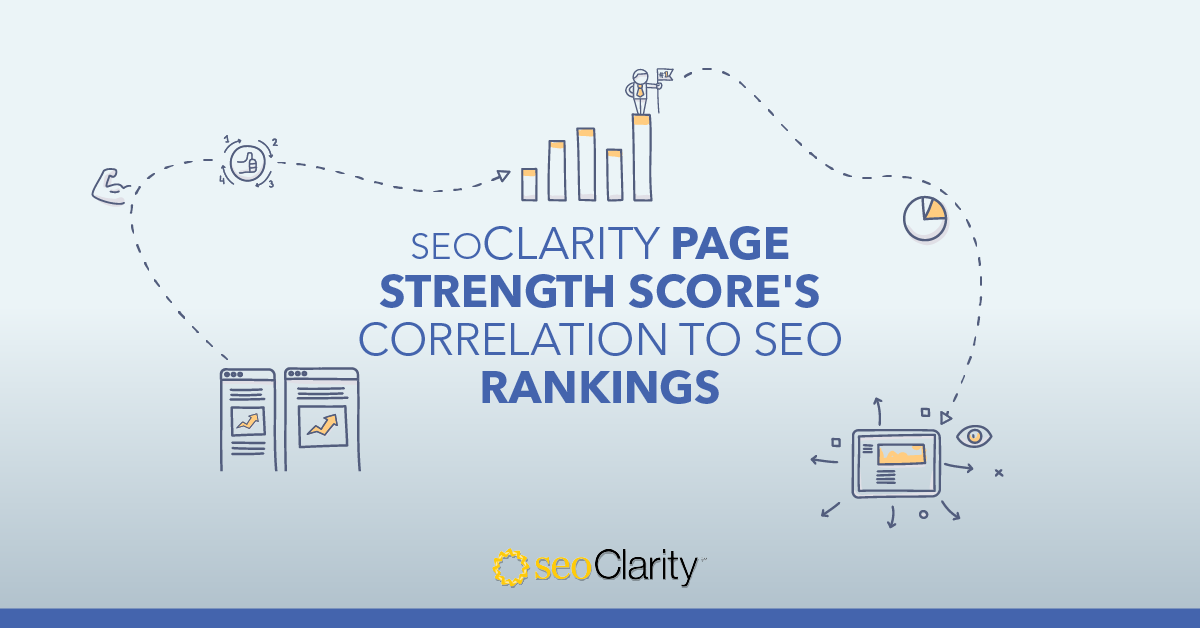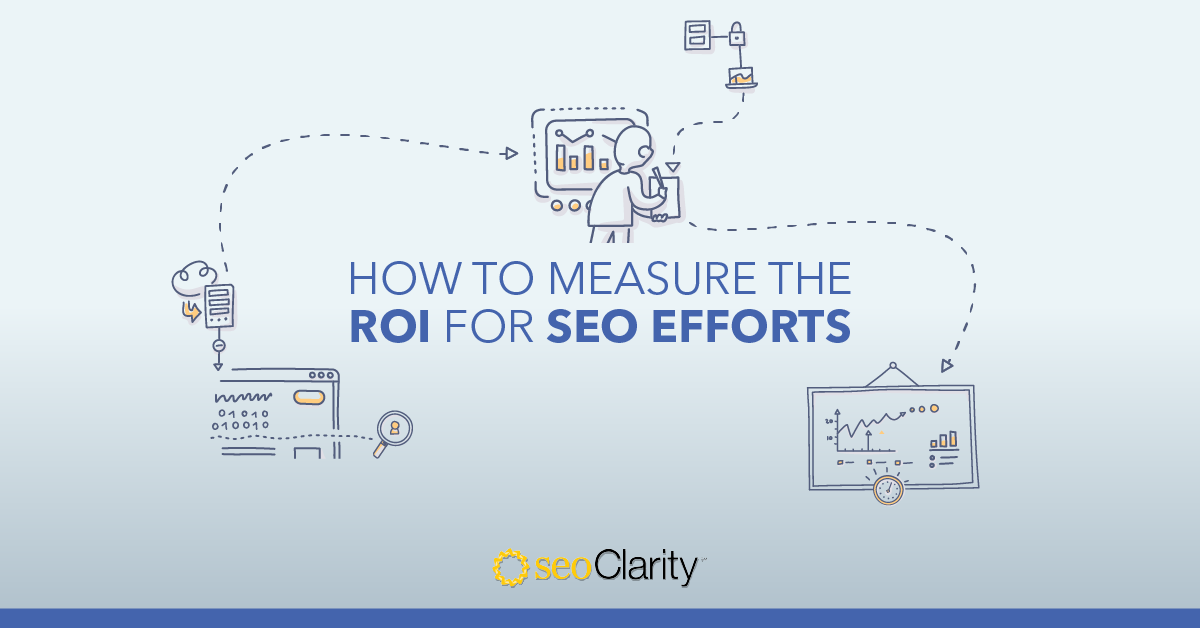When SEOs make their case for investment, they have to prove the value of the initiative upfront. This can be tricky due to the unpredictable nature of SEO results.
Unlike the straightforward ROI of other digital marketing channels like paid search – pay the money, receive the traffic – SEO's impact can be harder to measure.
Plus, SEO success metrics, such as rank improvements and increased traffic, significantly differ from most companies' standard metrics of cost savings and incremental revenue.
As a result, you may find yourself being questioned about each decision you make concerning SEO.
So how can you help the rest of your organization see the value of your SEO efforts? The answer lies in SEO forecasting.
Let's dive in!
Table of Contents:
What is SEO Forecasting?
SEO forecasting is the process of determining what results SEO can drive. Think of it as a preview of potential ROI.
By analyzing site data, you can predict potential site visibility, which allows you to forecast organic traffic potential and conversion rates – insights your company will want to know.
Essentially, forecasting traffic potential and measuring the ROI of SEO allows you to build a business case around SEO, providing justification for the importance of organic search insights.
SEO leaders (and I mean those companies dominating their competition in the search engines) prioritize SEO forecasting.
How to Create an SEO Business Case Alligned With Company Goals
Forecasting data reveals a direct connection between SEO goals (i.e. ranking improvements) and organizational goals (i.e. making money).
When the company sees that organic search has the potential to not only save them but also MAKE them money, they'll see the value of your SEO strategy.
Highlighting The Connection Between SEO Metrics and Sales Results
Let me show you the direct link from your SEO efforts to tangible sales results.
1. Ranking Improvements
Since most clicks go to the top three search results, SEOs strive to optimize blog posts and other content to get it as close to the top of the SERP as possible.
CTR studies show that the site in position one on Google receives twice as many clicks than the site in position two.
Ranking higher on the SERP means more visibility for your site, and therefore more impressions.
As our chief architect and co-founder Mitul Gandhi says, “That’s why people fight for rankings.”
2. Traffic Improvements
Higher search visibility leads directly to more traffic. If your page ranks well, people will click it.
It’s important to note that Google Search Console (GSC) is the only source of valid CTR data in the world for any company. Not even Google Analytics (GA) provides this data.
For the purposes of forecasting SEO, as well as other SEO projects, users of seoClarity can configure their GSC data on CTR and apply it in all the metrics found on the platform.
Recommended Reading: How to Identify Your Organic Traffic Potential in seoClarity
3. Increased Conversions
Companies have different ways of classifying their conversions. Some may want to generate more leads, while some focus on increasing orders and sales.
Whatever the case may be, the more traffic your site is driving, the higher the number of conversions your site will have. More visitors means more potential customers.
4. Increased Sales
We have now come full-circle to see that SEO helps the company achieve its ultimate goal of driving revenue.
Something like search engine ranking doesn’t seem important to other departments because they don’t realize the connection is has to the sales team.
When you see the process this way, you see that it is possible to bridge the gap between the SEO and the organization. The efforts of an SEO are relevant to the entire company.
Tying SEO to Key Business Objectives: Proving ROI
Now lets dive into how SEO helps support two of the most notable objectives of any business: saving and making money.
How Forecasting Saves Money
Businesses love to save money. Executives constantly ask, “What would X cost me here?” and “What would it cost me elsewhere?” When you pull forecast data, you see that SEO can yield results at a cheaper price than paid search.
How exactly do you show this?
You only need two pieces of data:
- The first is the average CPC. This is a great measure because company’s usually know what they’re paying for their paid search efforts.
- The second data point is the Potential Search Visibility, which is the search demand from where you already rank.
For example, if a company’s Traffic Potential – which can be found in the Keyword Research Grid in the seoClarity platform – was 3.9 million and the CPC was $2, they would be willing to pay $7.8 million for that traffic.
If you propose an investment of just 10% of that value to go into SEO, that’s a fair gamble for a company to take.
Showcasing money saved is the first step in building a business case around SEO.
How seoClarity Helps Forecast Your Potential Search Visibility
Since search engine algorithms are complex and take into consideration a vast amount of data, content marketers need to look at the full picture of their site to reliably forecast SEO. That’s where an SEO platform can help.
The Keyword Research Grid within seoClarity can filter results, allowing you to see your true potential, which is the rank where Google sees your site as relevant but not authoritative: rank positions 11-30.
(Note: typically anything beyond position 30 is a far stretch to get into the top rank positions without further investment and heavy lifting and a better understanding of your competitive landscape/opportunity).
With this filter in our example, our Potential drops to 1.1 million. With our CPC set to $2, we know the company would be willing to pay $2.2 million for the traffic. We propose only a 10% investment ($220,000).
This example is at the highest level (the total potential traffic). But, you can also see information at a more granular level by looking at specific keywords.
If you’ve already identified the keywords you want to build this business case for, you can tag them and filter them in the platform.
How Forecasting Makes Money
Saving money is a secondary objective, but it is easy for an SEO to show. That’s why you go after it first.
But it's much easier for an organization to buy into a business case for SEO when it also allows them to make more money.
Answering the question of "how much money would this make the company?" starts with estimating potential traffic. This helps reveal potential sales and therefore potential revenue for a company.
You can also do this using Excel or Google sheets by setting the formulas in your template upfront to calculate your SEO forecast.
Or you can save time on such tedious calculations by using seoClarity's SEO Forecasting tool.
How to Easily Forecast Your Traffic Potential With seoClarity
Here’s how to forecast your potential with seoClarity’s SEO Forecasting tool, Traffic Potential:
1. Go to Google Search Console (GSC) and pull the last 90 days of data.
Remember, GSC is the only valid source of CTR data. Upload this data into the settings page. (Note: use non-brand CTR for all estimates and forecasts).
2. Enter your goals.
Your goal may be “Sales,” “Lead,” “Orders,” etc.
3. Enter your site's average conversion rate.
This is usually less than 3%, and can be found within Site Analytics if you have your site analytics integrated within seoClarity. Or, leverage your company's site analytics tool to get the average CVR.
4. Enter the Average Order Value.
Average order value applies for eCommerce or other per transaction cost. If you are in a different industry, add what a conversion value is worth to your company.
That could be Value of a Lead, Lifetime Value of a Customer, or other metrics your company uses to measure a "transaction" or "conversion value".
5. Enter your scenario.
seoClarity offers multiple scenario options. You can choose between,
- All Keywords Ranking X
- All Keywords Change X%
- All Keywords Change X positions
6. Click “Update” to see your forecasted change.
Let’s see this in action.
 (Traffic Potential in the seoClarity platform.)
(Traffic Potential in the seoClarity platform.)
In the situation above, we’ve selected the CTR Curve to come from the CTR Index. As previously mentioned, this is the CTR Index from the settings page.
We entered our goal as “Orders,” but your goal may be something else entirely. The Conversion Rate can be found within Site Analytics. For this example, we’ll say it’s 2%.
Site Analytics will also have the Average Order Value. In this case, we set it to $100.
Next, we need to select our scenario, which is the last assumption we need to make. We selected the scenario “All Keywords Ranking X,” where X is our best case scenario of ranking for position three. (Note: The best case scenario of ranking first is wildly unexpected).
After we click “Update” we see the potential forecasted traffic.

(The Forecasted Traffic, Orders, and Orders Value shown in Traffic Potential.)
The platform now looks at all the keywords you track and the search volume, and determines what would happen if all of these keywords moved to the third rank position.
In this example, we went from a Monthly Estimated Traffic of 6, to a Forecasted 36.8 million.
If we had 36.8 million visits, and if our 2% conversion rate held true, we would receive more than 700,000 orders, for a total value of $73.7 million.
seoClarity takes your variables and does the math for you, presenting you the information at a summary level (as seen above) as well as a keyword-by-keyword level.
This information can be translated onto a slide deck and promoted internally, within the different scenarios you select to forecast.
Analyzing the ROI of Generated Traffic
You may be wondering, what is the ROI of the invremental traffic you’ve generated as a result of your content marketing strategy? Luckily, another scenario Traffic Potential is capable of running is ROI of SEO.
This isn’t forecasting, but more so a backward look at the time between two dates. This allows you to see how your keyword traffic has changed over time, and allows you to prove the value of your SEO investment.
For example, you can see how your ranking changed from the start of the previous quarter to the end of the quarter, and how this change affected the traffic that was driven. Let’s see this in action.

(Setting the ROI scenario in Traffic Potential.)
In this example, we’re still using CTR data from the Index, and there’s no need to fill out the Conversion Estimate assumptions.
Remember, this is a backward look, not a forecast.
We then input two dates, 4/01/2019 and 06/06/2019. This range is a good representation of Quarter 2. Next, we hit “Update.”

(ROI results for two given dates.)
As we see in the image above, the Search Volume had a 3.5 million increase during Q2. Average Rank and Traffic Potential also increased, resulting in an Acquisition Value of 6.6 million, which is essentially saying that there was $6.6 million worth of traffic.
ROI can also be viewed at a summary level or at a keyword-by-keyword level. Let’s take a look at the information a specific keyword can reveal.

(Keyword look into ROI)
As we see above, this keyword went from position six, where it was getting 41,000 visits, to position two, where traffic jumped to 197,000. According to the data (CPC), the 41,000 visits would have cost $342,000 to get.
This means the 197,000 visits we did receive were practically free. The value of the traffic we received was $1.6 million, meaning we saved the company $1.3 million.
The Full Process of Building an SEO Business Case
With the forecasting data you've collected above, you can now approach your SEO business case in a data-driven, insightful way. This methodical approach greatly improves your chances of success.
The creation of an SEO business case can generally be thought of in six steps:
- Gather a CTR, ideally for mobile, desktop, brand, and non-brand.
- Apply the CTR model to your current data (using the search volume of keywords) to see current estimated performance.
- Compare the current estimate with your actual analytics numbers. This way, the CTR model can be adjusted and reapplied if needed.
- Identify the competitiveness of your keywords to determine the ease of ranking improvements. Do this by using Adwords CPC data.
- Project the rank growth to your keywords and reapply the CTR to forecast potential returns.
- Present your projections to your higher-ups, and make your case!
Conclusion
SEO forecasting data presents potential traffic trends that showcase the potential for sales. To win, you’ll need to understand what potential your strategies have to drive key metrics and the super desirable “new customer” to your website.
This information can be used to build a business case that shows the value of SEO and how it can be used to accomplish company-wide goals.
The seoClarity platform makes it easy to predict changes in organic search rank and establish what that change means for traffic, conversion and sales.
<<Editor's Note: This post was originally published in December 2019 and has since been updated.>>







1 Comment
Click here to read/write comments